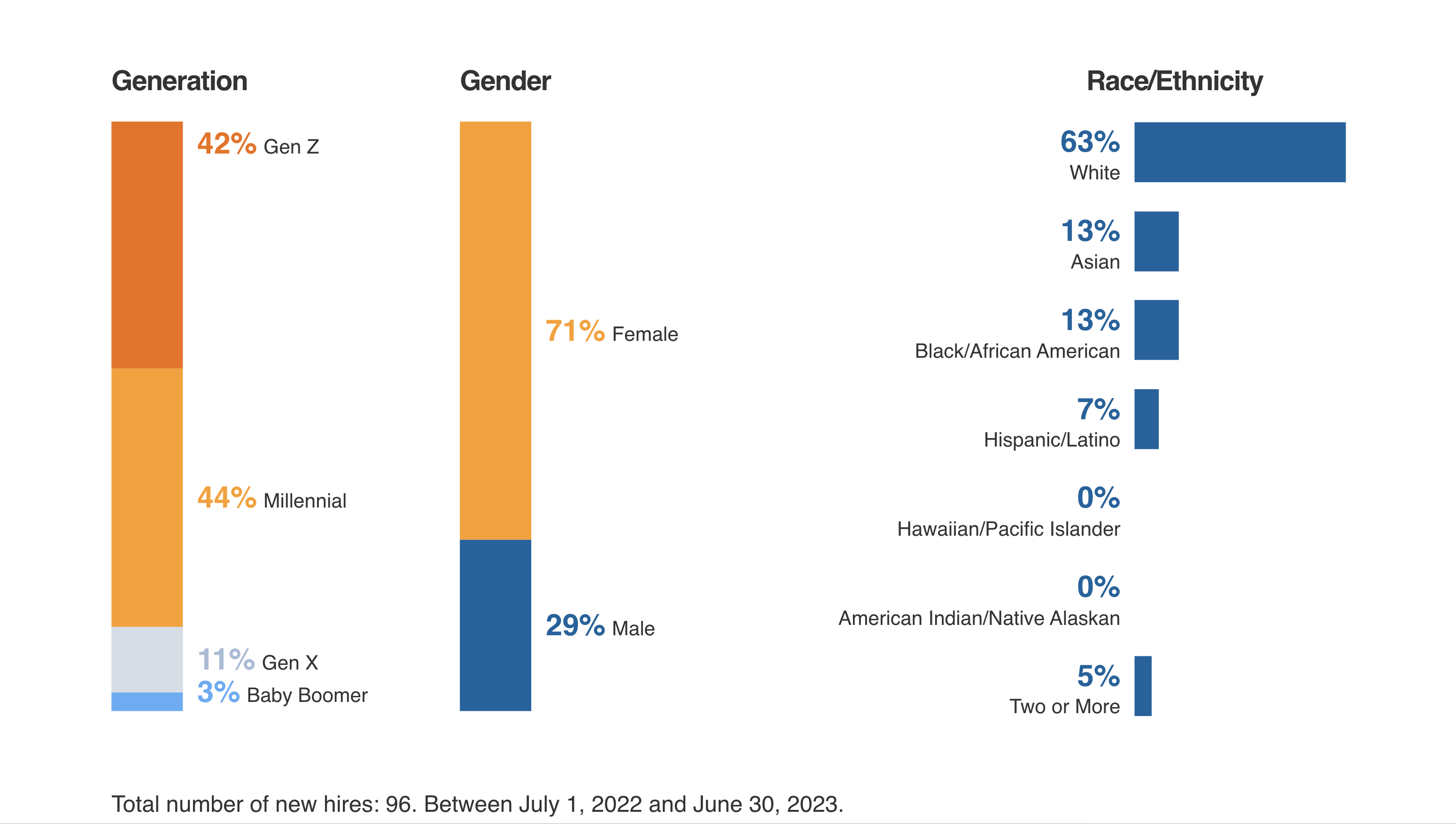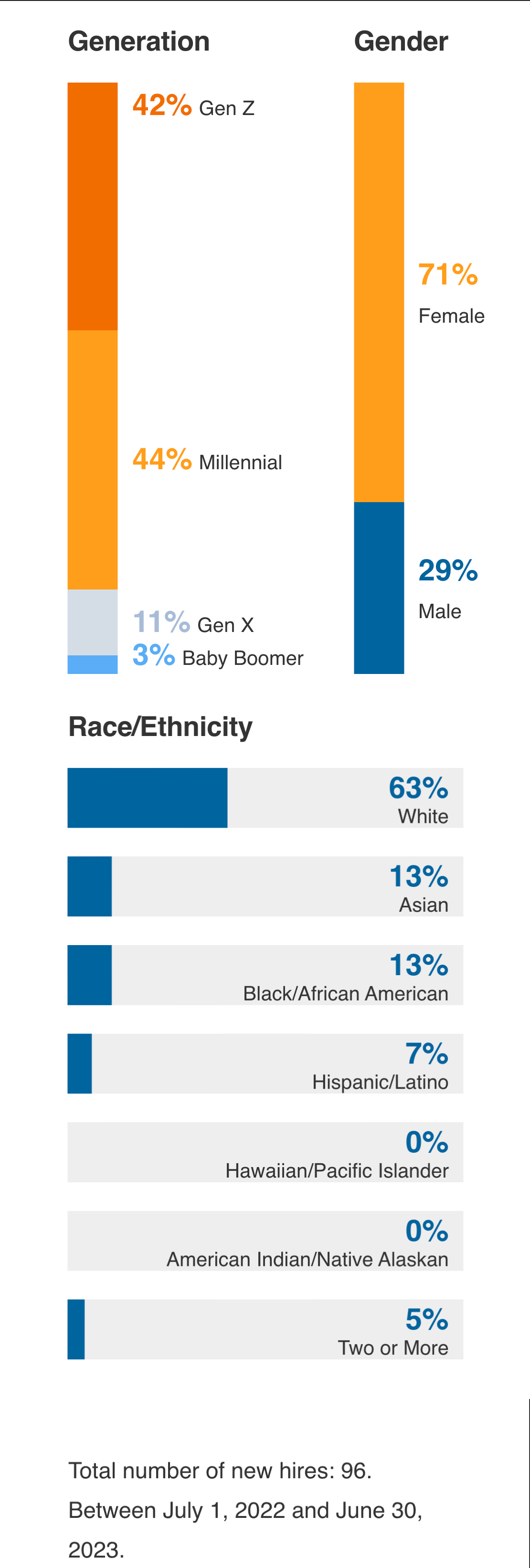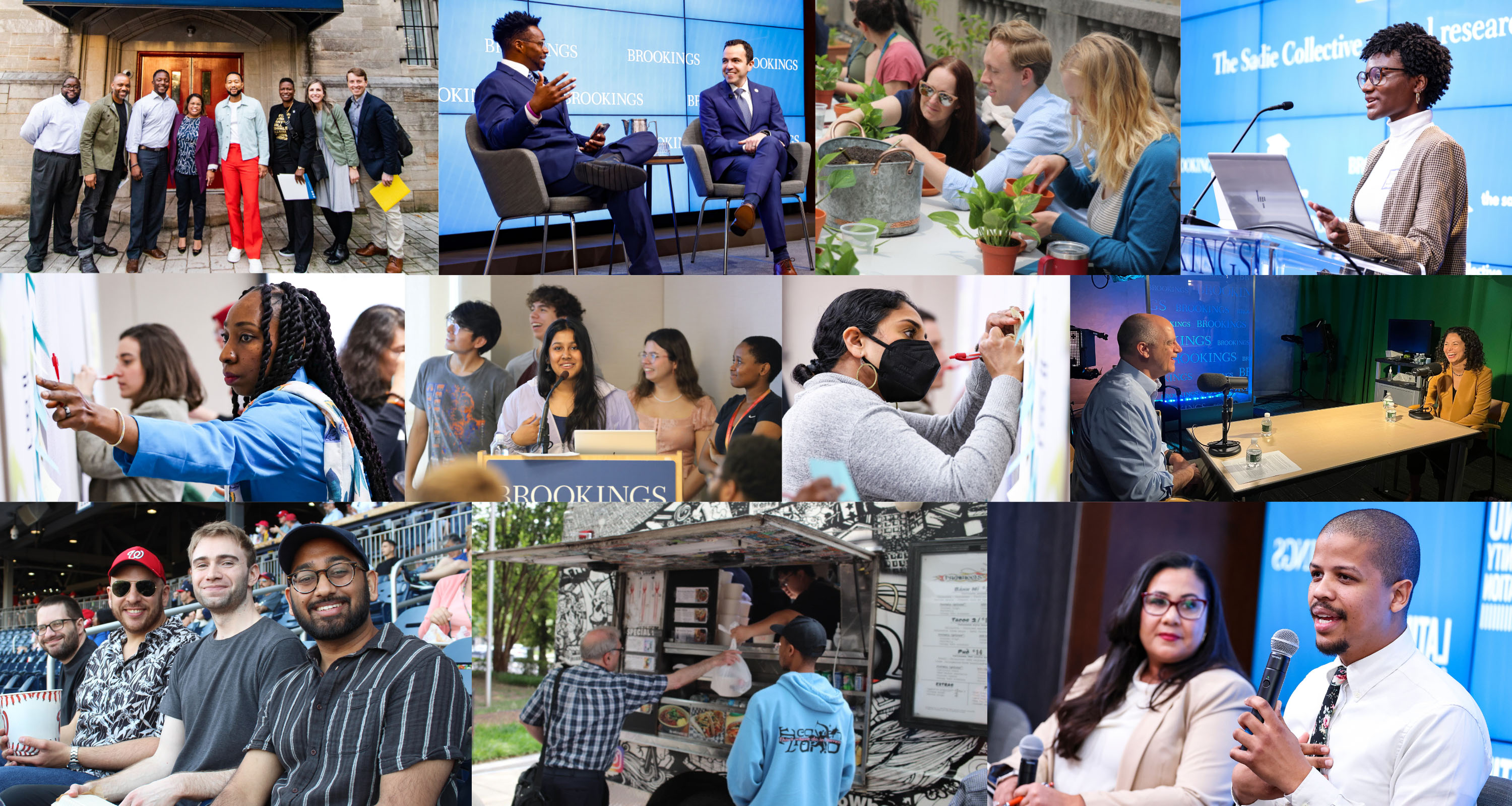
INCLUSION AND DIVERSITY
Introduction
The Brookings Institution is committed to championing issues of diversity, equity, and inclusion across all aspects of our work. We recognize that to produce high-quality research that informs innovative, practical policy recommendations, we must strive for a workplace that represents diversity of experience, thought, and personal background.
Brookings strives to continuously offer an inclusive and welcoming workplace that values the experiences, ideas, and efforts of all contributors. This means ensuring that everyone is heard, appreciated, and empowered to fully participate in Brookings’s mission, and holding ourselves accountable whenever and wherever we can improve.
To that end, we publish annually our workplace and Board of Trustee demographics as we continue our journey towards greater diversity, equity, and inclusion. Since we began publishing this data in 2018, we have noted both exciting improvements and areas where continued, sustained effort is needed. Furthering this commitment, we have also identified goals for our community in these and other important areas.
While we will always have more to do, we remain optimistic that through hard work, transparency, and accountability, real progress on measures of diversity and inclusion can be achieved over the long term.
Methodology
How
The source of this data is based on a questionnaire completed by all Brookings employees. The categories for race and gender are determined by the federal government for workforce reporting. The categories used for generation identification have been defined by Pew Research Center.
Generation Z: born 1997 to 2012
Millennial: born 1981 to 1996
Generation X: born 1965 to 1980
Baby Boomer: born 1946 to 1964
Silent Generation: born 1928 to 1945
The Numbers
As of July 1, 2023, our staff headcount was 410 employees, who are primarily located in Washington, DC. This includes:
Our Leadership Team (13): President and Vice Presidents
Our Fellows/Senior Fellows (103): Brookings Resident Scholars
Our Research Support (71): Research Assistants, Research Associates and Research Analysts
Our Operational Teams (223): Central and program positions in Management, Operations, Communications, Development, Facilities, Finance and Investments, HR, Library, Legal, and Information Technology
This data does not include our nonresident scholars, as they are not employees.

How We're Improving
Recent Highlights
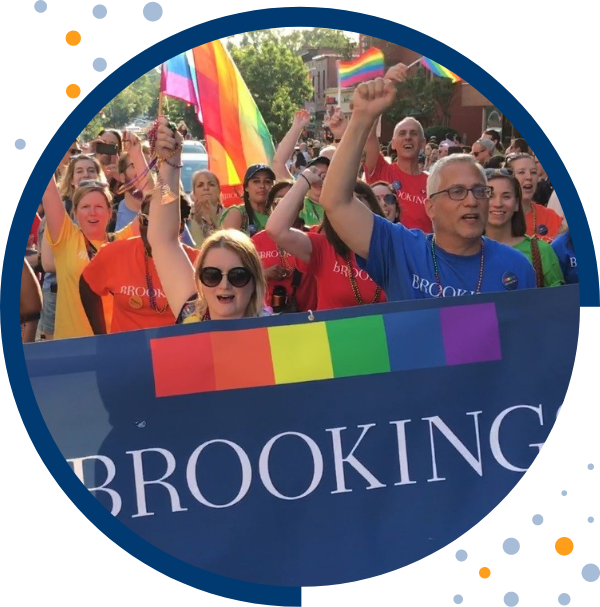 Lorem ipsum dolor sit amet, consectetur adipiscing elit, sed do eiusmod tempor incididunt ut labore et dolore magna aliqua.
Lorem ipsum dolor sit amet, consectetur adipiscing elit, sed do eiusmod tempor incididunt ut labore et dolore magna aliqua.
Supported by Brookings’s DEI Committee and drawing deeply on input from staff, we launched our first affinity groups in December 2022. These are voluntary, employee-led groups of individuals who regularly engage in learning and community-building activities around shared interests. To date, we have supported the formation of four themed affinity groups: parents and caregivers; Black, Indigenous, and people of color; individuals managing chronic illness and disability; and LGBTQ+ community members. The groups are open to all staff and create opportunities to build community with supportive colleagues and allies; to engage in customized programming relevant to their needs and interests; and to provide input to Brookings’s leadership on various Institution-wide initiatives. To date, over 100 individuals have joined as affinity group members or leaders.
 Lorem ipsum dolor sit amet, consectetur adipiscing elit, sed do eiusmod tempor incididunt ut labore et dolore magna aliqua.
Lorem ipsum dolor sit amet, consectetur adipiscing elit, sed do eiusmod tempor incididunt ut labore et dolore magna aliqua.
Providing staff with a broad range of development opportunities is central to our DEI work at Brookings. This past year, offerings included an all-staff keynote session on how to understand and leverage the power of generational diversity in the workplace and an equity-informed leadership skills training with targeted follow-up for both people managers and individual contributors.
We have also continued our highly regarded Racial Equity in Research seminar series, featuring external experts who share their research and methodology with Brookings staff. Since 2021, this series has helped to establish a shared foundation for members of the Brookings community to center and advance racial equity in our research, with a focus on the language we use, the methods we employ, and the questions we ask.
 Lorem ipsum dolor sit amet, consectetur adipiscing elit, sed do eiusmod tempor incididunt ut labore et dolore magna aliqua.
Lorem ipsum dolor sit amet, consectetur adipiscing elit, sed do eiusmod tempor incididunt ut labore et dolore magna aliqua.
In 2022, the Brookings Board of Trustees launched a Diversity, Equity, and Inclusion Committee, led by Trustees Tim Ryan and Cheryl Crazy Bull and composed of members with a broad range of relevant backgrounds. With a focus on supporting new and existing efforts related to DEI at Brookings, committee members bring their experience and perspectives to the goals of building a more diverse staff and Board and of deploying best practices related to DEI and workforce development in the year ahead.
 Lorem ipsum dolor sit amet, consectetur adipiscing elit, sed do eiusmod tempor incididunt ut labore et dolore magna aliqua.
Lorem ipsum dolor sit amet, consectetur adipiscing elit, sed do eiusmod tempor incididunt ut labore et dolore magna aliqua.
To help increase the racial, gender, and socioeconomic diversity of the pipeline of students pursuing majors and graduate work in economics, Brookings partnered with the Expanding Diversity in Economics Summer Institute sponsored by the Becker-Friedman Institute for Economics at the University of Chicago. Brookings’s Economic Studies program hosted 45 undergraduate students in Washington, D.C., for a week in June 2023. Program participants met with scholars at Brookings; visited major economic policymaking institutions, such as the Treasury Department, International Monetary Fund, World Bank, and Federal Reserve Board; and networked with early career staff at a number of think tanks.
Additionally, to help address the dearth of Black women in economics and related fields, the Hutchins Center on Fiscal and Monetary Policy has partnered with the Sadie Collective since 2019 to host a research reception celebrating the work of young Black female economists from all stages of the pipeline. During the February 2023 reception, held ahead of the collective’s annual conference, the Federal Reserve’s Lisa Cook delivered opening remarks and six scholars presented their work on a variety of topics.
 Lorem ipsum dolor sit amet, consectetur adipiscing elit, sed do eiusmod tempor incididunt ut labore et dolore magna aliqua.
Lorem ipsum dolor sit amet, consectetur adipiscing elit, sed do eiusmod tempor incididunt ut labore et dolore magna aliqua.
In April 2023, Brookings announced a partnership with HUMANLEVEL, a nonprofit initiative founded by artist and activist John Legend to uplift communities disproportionately impacted by institutionalized racism. The partnership aims to improve well-being, equity, and upward economic mobility for communities nationwide by bringing together racial equity research and local action. The partnership’s first report, exploring why the study of well-being is crucial for race relations and advancing prosperity, featured new data that represents the longest continuous time series of life evaluation data by race and ethnicity ever published. The partnership’s launch was commemorated at an event in Washington, D.C., in which John Legend joined Brookings Senior Fellows Andre Perry and Camille Busette.
 Lorem ipsum dolor sit amet, consectetur adipiscing elit, sed do eiusmod tempor incididunt ut labore et dolore magna aliqua.
Lorem ipsum dolor sit amet, consectetur adipiscing elit, sed do eiusmod tempor incididunt ut labore et dolore magna aliqua.
Brookings strives to foster an inclusive workplace in which world-class talent can thrive and do meaningful work. In 2023, the Institution reached an initial agreement with Brookings United, our new staff union. This agreement governs key aspects of employment for our unionized staff and reinforces our ongoing efforts to ensure that all our employees are valued, engaged, and supported. Importantly, the agreement also establishes the groundwork for future negotiations on a comprehensive, multi-year collective bargaining agreement. As Brookings continues to tackle the world’s most important policy issues, we are committed to maintaining a positive and collaborative relationship with our union, and to working together to build a better future for Brookings and all our employees.
Core Commitments
The Brookings Inclusion and Diversity Committee was formed in 2016. The committee consists of 26 staff members at all levels – from early career to executive – with representatives from business units, research programs, and employee networks. Members serve as ambassadors and liaisons to their teams and are the thought leaders behind the work we do. The committee’s mission is to advance the strategic priority on inclusion, equity, and diversity at Brookings through:
- Supporting and promoting work by Brookings researchers on race, justice, and equity.
- Prioritizing gender, racial, and other forms of diversity in all Brookings events. This includes seeking to avoid “all male” panels and ensuring that invited speakers and panelists represent a variety of perspectives and backgrounds related to the topics being discussed.
- Providing training opportunities aimed at building both fundamental, shared competencies, and responding to evolving needs. Together, these offerings equip employees to build an inclusive and respectful workplace. Embedding inclusion, equity, and diversity in our human resources practices, including the regular analysis of the recruitment and selection processes.
- Continuing to leverage our jobs framework to ensure equitable and consistent treatment across the Institution.
- Celebrating the diversity of our staff through Heritage Months and other cultural observances and supporting Affinity Groups that provide employee-led programming and engagement opportunities for staff around shared identities.
Priorities for the Year Ahead
Over the next year, we are committed to building on our existing work and to continuing to advance our core commitments. In addition, we are prioritizing the following activities in the year ahead:
Staff working groups provide opportunities for employees to engage with colleagues on issues of broad interest across the institution and offer new ideas that contribute to our shared DEI goals. Following in the successful footsteps of staff working groups that helped launch our heritage month programming and our affinity groups, we will support in-progress efforts related to gender inclusion and to reimagining our internship program with a focus on expanding opportunities for students from a wide range of backgrounds.
Building a diverse workforce begins with ensuring that our positions attract applicants from a wide array of backgrounds and that hiring managers approach the task of considering qualified candidates with equity in mind. In the year ahead, we will continue to: rebuild our outreach programming for internship and early career positions; support pipeline building efforts in individual research programs; provide training opportunities to equip individuals—both experienced hiring managers and those new to the role— with tools to use throughout the recruitment process; and leverage our new website to showcase to applicants the ways Brookings values inclusion and diversity.
As part of Brookings’s long-standing commitment to pay equity, Brookings's HR team hosted a series of training sessions and provided resources to inform staff on our compensation philosophy, guiding principles, and pay practices. Our goal for 2024 is to begin sharing position-specific salary range information with staff and to include salary information on all open positions posted on our website.
At Brookings, we are looking afresh and further evaluating various aspects of our facilities to ensure they fully support the needs of our diverse workforce and visitors alike. Improving the physical space and environment for individuals who are differently-abled, creating additional gender-neutral restrooms, and with the rollout of our new website in June 2023, a continued attention to best practices regarding web accessibility are a few representative areas of our renewed and forthcoming focus.
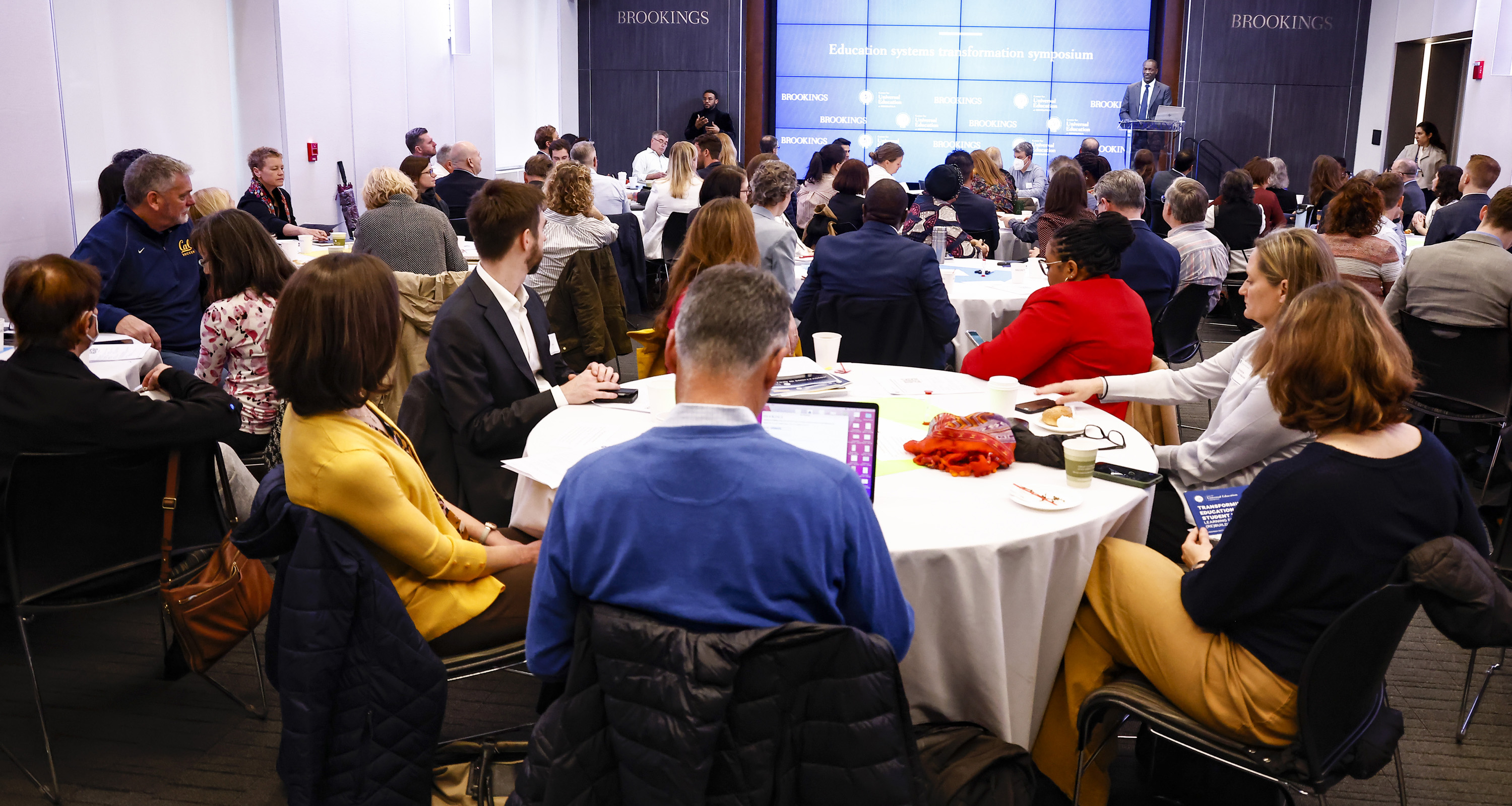
Resources
As we work to make progress within our own Institution on diversity, equity, and inclusion, we seek to apply the same rigorous, research-based principles that guide all of our work to our decision-making in this area. In that spirit, we conduct ongoing research to help inform our internal inclusion and diversity objectives and priorities, including the following:
- Not just a typographical change: Why Brookings is capitalizing Black, David Lanham and Amy Liu, September 2019
- A public letter to the Associated Press: Listen to the nation and capitalize Black, David Lanham, June 2020
- Gender and racial diversity of federal government economists, David Wessel, Lorena Hernandez Barcena, and Nasiha Salwati, December 2021
Photo credits:
Photos by Paul Morigi, Sharon Farmer, Madeleine Walshak, Becker Friedman Institute, the Brookings Network, and Shutterstock.

